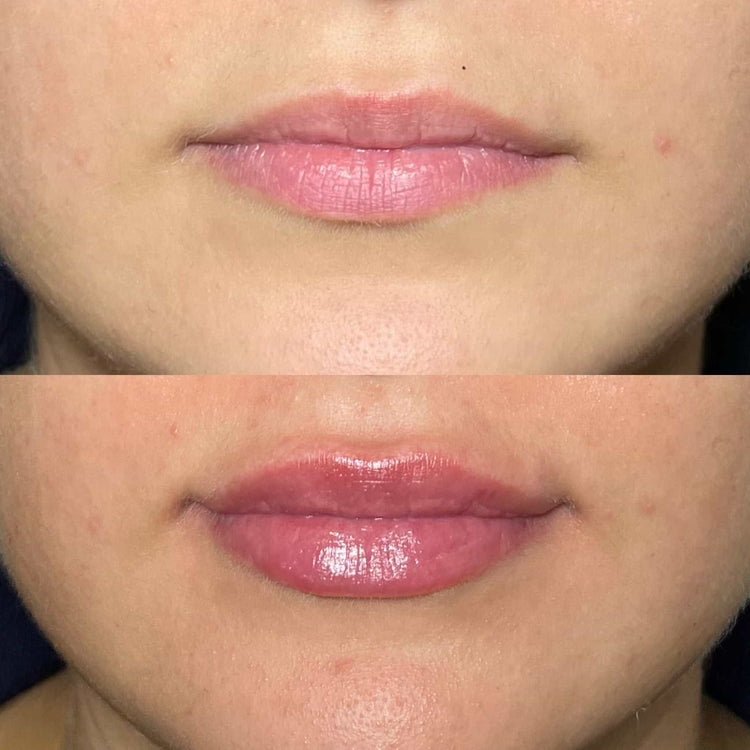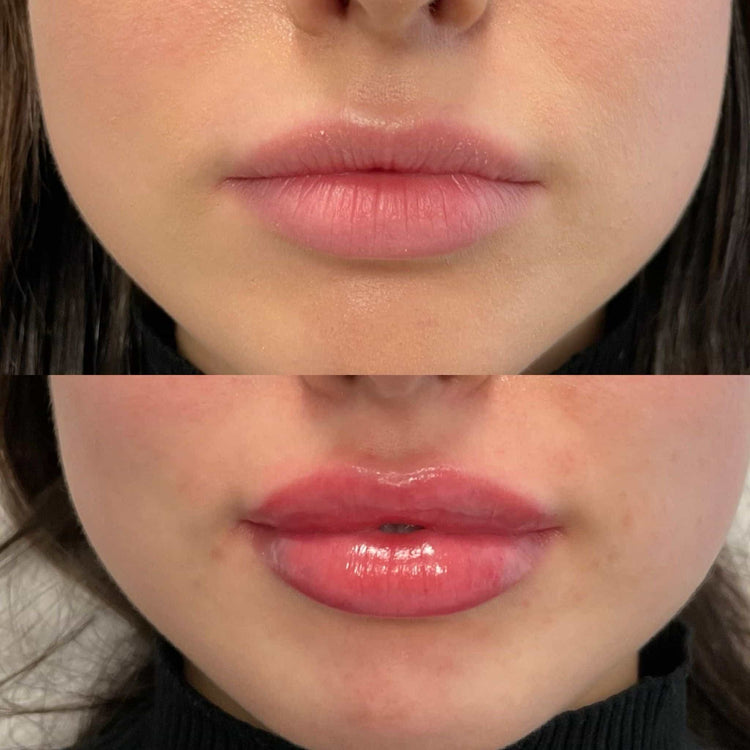Types of Dermal Fillers for Lips Embarking on a journey to achieve fuller, more defined lips? Dermal fillers have become increasingly popular in the UK, offering a non-surgical solution to enhance lip shape and volume.
Types of Dermal Fillers for Lips
Embarking on a journey to achieve fuller, more defined lips? Dermal fillers have become increasingly popular in the UK, offering a non-surgical solution to enhance lip shape and volume. A variety of hyaluronic acid-based fillers are available, each formulated with unique properties to cater to individual needs and desired outcomes.
Hyaluronic Acid Fillers
Hyaluronic acid (HA) is a naturally occurring substance found in the body that helps maintain skin hydration and elasticity. HA-based dermal fillers work by attracting and retaining moisture, plumping up the lips and smoothing out wrinkles.
There are various types of HA fillers designed specifically for lip enhancement. Some popular choices include:
– **Smooth, medium-viscosity fillers:** These are ideal for adding subtle volume and definition to the lips, creating a natural-looking plumpness.
– **Gel fillers:** These provide more substantial volume and can be used to create fuller, more pronounced lips.
– **Structured gels:** These are designed to sculpt and define the lip contours, enhancing shape and symmetry.
Collagen Fillers
Collagen is a naturally occurring protein found in the body that provides structure and support to skin tissues. Collagen fillers were once used for lip enhancement but have largely been replaced by hyaluronic acid (HA) fillers due to their longer-lasting results and lower risk of allergic reactions.
The Procedure
The decision to enhance one’s lips through dermal fillers is a personal one, often motivated by a desire to achieve a fuller, more defined appearance. In the UK, hyaluronic acid (HA)-based fillers have gained immense popularity as a non-surgical solution for lip augmentation.
Consultation and Assessment
The process of enhancing lips with dermal fillers typically involves three key stages: consultation, procedure, and assessment.
During the consultation, a qualified practitioner will discuss your aesthetic goals, medical history, and any concerns you may have. They will assess your facial anatomy, lip shape, and desired outcome to determine the most suitable type and amount of filler needed. You can also ask questions and express your preferences to ensure you feel comfortable with the proposed treatment plan.
The procedure itself is relatively quick and painless. It typically involves injecting the dermal filler into specific areas of the lips using a fine needle or cannula. A topical anesthetic cream may be applied beforehand to minimize any discomfort. The practitioner will carefully inject the filler, sculpting and shaping the lips to achieve your desired look.

Following the procedure, you will have a short recovery period. Some minor swelling and bruising may occur, but this usually subsides within a few days. You can resume most of your normal activities immediately, but avoid strenuous exercise and excessive sun exposure for a week or two.
A follow-up assessment appointment will be scheduled to evaluate the results and address any concerns. During this appointment, the practitioner will check for symmetry, ensure you are happy with the outcome, and discuss any necessary adjustments or future treatments.

Preparation
Before embarking on lip enhancement with dermal fillers, it’s crucial to consult with a qualified practitioner. During this consultation, they will assess your individual needs, medical history, and desired outcomes. This discussion allows for personalized recommendations regarding the type of filler, dosage, and injection technique best suited for achieving your goals.
On the day of the procedure, it’s important to arrive with a clean face free of makeup. You may be asked to sign consent forms and discuss any potential risks or side effects associated with the treatment.
The practitioner will then apply a topical anesthetic cream to minimize discomfort during the injection process. This allows for a more comfortable experience.
Injection Technique
The Injection Technique involves carefully injecting the dermal filler into specific areas of the lips using a fine needle or cannula. A topical anesthetic cream is often applied beforehand to minimize any discomfort during the procedure.
Aftercare Instructions
After your lip enhancement treatment, it’s essential to follow your practitioner’s aftercare instructions carefully to ensure optimal healing and results. These instructions typically include guidelines on managing swelling, bruising, and any potential side effects. Following these recommendations will help minimize risks and promote a smooth recovery process.
Swelling and Bruising Management
Aftercare instructions are crucial for ensuring optimal healing and minimizing the risk of complications following lip enhancement with dermal fillers. It’s essential to follow your practitioner’s specific guidelines, but generally, you should expect some swelling and bruising that typically subsides within a few days.
To manage swelling, applying a cold compress to the treated area for short periods can help reduce inflammation. You can also elevate your head while sleeping to minimize fluid buildup in the face. Avoid touching or rubbing your lips excessively, as this can irritate the area and potentially delay healing.
Bruising is a common side effect of lip filler injections and usually resolves within a week or two. Over-the-counter pain relievers, such as ibuprofen or paracetamol, can help manage discomfort if needed.
It’s important to avoid activities that could put stress on the treated area, like strenuous exercise or excessive sun exposure, for at least a week following the procedure. This allows time for the filler to settle and your lips to heal properly.
Follow-up Appointments
Aftercare instructions are crucial for ensuring optimal healing and minimizing the risk of complications following lip enhancement with dermal fillers. It’s essential to follow your practitioner’s specific guidelines, but generally, you should expect some swelling and bruising that typically subsides within a few days.

To manage swelling, applying a cold compress to the treated area for short periods can help reduce inflammation. You can also elevate your head while sleeping to minimize fluid buildup in the face. Avoid touching or rubbing your lips excessively, as this can irritate the area and potentially delay healing.
Bruising is a common side effect of lip filler injections and usually resolves within a week or two. Over-the-counter pain relievers, such as ibuprofen or paracetamol, can help manage discomfort if needed.
It’s important to avoid activities that could put stress on the treated area, like strenuous exercise or excessive sun exposure, for at least a week following the procedure. This allows time for the filler to settle and your lips to heal properly.
Follow-up appointments are typically scheduled within a few weeks of the initial treatment to assess the results and address any concerns. During this appointment, you can discuss your satisfaction with the outcome and ask questions about any lingering swelling or bruising.
Lifestyle Considerations
Aftercare instructions are crucial for ensuring optimal healing and minimizing the risk of complications following lip enhancement with dermal fillers. It’s essential to follow your practitioner’s specific guidelines, but generally, you should expect some swelling and bruising that typically subsides within a few days.
To manage swelling, applying a cold compress to the treated area for short periods can help reduce inflammation. You can also elevate your head while sleeping to minimize fluid buildup in the face. Avoid touching or rubbing your lips excessively, as this can irritate the area and potentially delay healing.
Bruising is a common side effect of lip filler injections and usually resolves within a week or two. Over-the-counter pain relievers, such as ibuprofen or paracetamol, can help manage discomfort if needed.
It’s important to avoid activities that could put stress on the treated area, like strenuous exercise or excessive sun exposure, for at least a week following the procedure. This allows time for the filler to settle and your lips to heal properly.
Risks and Side Effects
Like any medical procedure, lip enhancement with dermal fillers carries potential risks and side effects. These can range from mild and temporary, such as swelling, bruising, or tenderness, to more serious complications that are rare but require immediate medical attention. It’s crucial to have a thorough consultation with a qualified practitioner who will assess your individual circumstances and explain the potential risks associated with your specific treatment plan.
Temporary Side Effects
Risks and side effects, although often temporary, can occur with lip enhancement using dermal fillers.
- Common Temporary Side Effects: Swelling, bruising, redness, tenderness, itching, and numbness around the injection sites are common and usually subside within a few days to a week.
- Less Common Side Effects: In rare cases, more persistent side effects like asymmetry (uneven lips), lumps or bumps under the skin, infection, or allergic reactions may occur.
It’s essential to discuss your medical history and any potential allergies with your practitioner before undergoing treatment. They can advise you on the best course of action to minimize risks and ensure a safe and successful outcome.
Long-Term Risks
Like any medical procedure, lip enhancement with dermal fillers carries potential risks and side effects. These can range from mild and temporary, such as swelling, bruising, or tenderness, to more serious complications that are rare but require immediate medical attention. It’s crucial to have a thorough consultation with a qualified practitioner who will assess your individual circumstances and explain the potential risks associated with your specific treatment plan.
Risks and side effects, although often temporary, can occur with lip enhancement using dermal fillers.
- Common Temporary Side Effects: Swelling, bruising, redness, tenderness, itching, and numbness around the injection sites are common and usually subside within a few days to a week.
- Less Common Side Effects: In rare cases, more persistent side effects like asymmetry (uneven lips), lumps or bumps under the skin, infection, or allergic reactions may occur.
It’s essential to discuss your medical history and any potential allergies with your practitioner before undergoing treatment. They can advise you on the best course of action to minimize risks and ensure a safe and successful outcome.
Long-term risks associated with dermal fillers are generally rare, but it’s important to be aware of potential complications that may arise over time.
- Filler Migration: In some cases, the filler material may migrate from its intended location, resulting in an unnatural appearance or lumps.
- Granuloma Formation: The body might form small, hard bumps (granulomas) around the injected filler, requiring removal.
- Vascular Occlusion: While rare, injecting filler too close to blood vessels can block blood flow, potentially leading to tissue damage. It’s crucial to seek immediate medical attention if you experience any signs of vascular occlusion, such as discoloration, numbness, or pain in the treated area.
Regular follow-up appointments with your practitioner are essential for monitoring your results and addressing any potential long-term issues. They can assess the filler’s longevity and recommend touch-up treatments or other options to maintain your desired lip shape and volume.
Choosing a Qualified Practitioner
Choosing a qualified practitioner is paramount when considering dermal fillers for lip enhancement. Look for practitioners who are experienced in administering facial fillers, preferably with specific expertise in lip augmentation. They should hold relevant medical qualifications and be registered with the appropriate regulatory bodies.
Qualifications and Experience
When selecting a practitioner for dermal filler injections, prioritize experience and qualifications. Look for individuals with extensive training and experience in facial aesthetics, particularly lip enhancement.
Verify that they hold appropriate medical licenses and are registered with relevant professional organizations. Inquire about their training methods, including any specialized courses or workshops they have completed in lip augmentation techniques.
Don’t hesitate to ask for before-and-after photos of previous patients to assess their aesthetic approach and ensure it aligns with your desired outcomes. A consultation allows you to discuss your goals, concerns, and medical history, enabling the practitioner to recommend suitable treatment options and address any questions you may have.
Clinic Reputation
Choosing a qualified practitioner is crucial when considering lip enhancement with dermal fillers. Look for practitioners who are experienced in administering facial fillers, preferably with specific expertise in lip augmentation. They should hold relevant medical qualifications and be registered with the appropriate regulatory bodies.
When assessing a clinic’s reputation, consider online reviews from previous patients, their website and social media presence, and any professional affiliations they may have. A reputable clinic will prioritize patient safety and satisfaction, offering transparent communication, comfortable facilities, and aftercare support.
Book your dermal filler consultation with Dr. Laura Geige at It’s Me & You Clinic
- Why Does Lip Filler Migrate - November 21, 2025
- What Is The Best Thing To Put On Lips After Fillers? - November 19, 2025
- What Are The Best CBD Gummies For Relaxation Before Bed? - November 16, 2025
